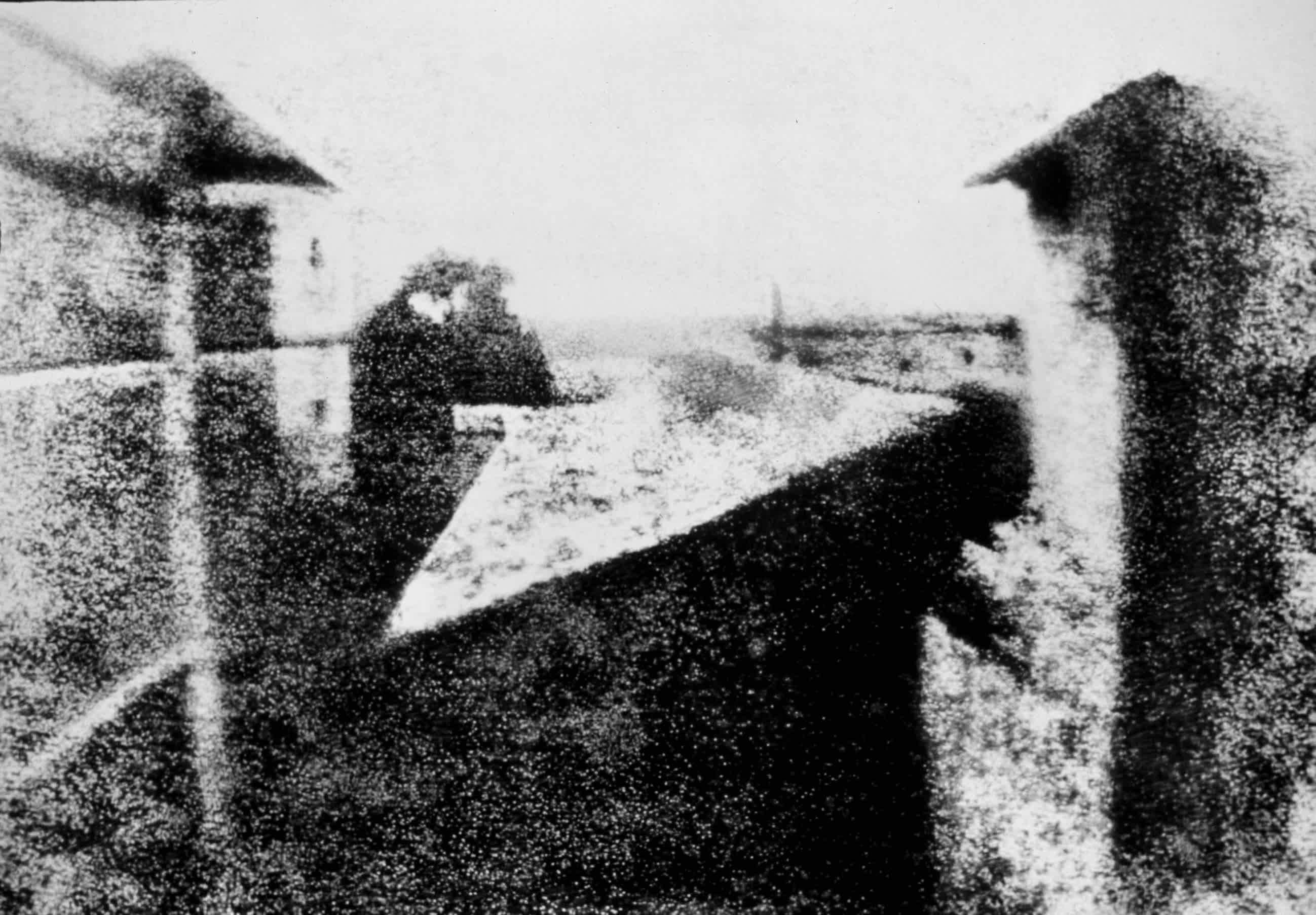Choose your answer and the correct choice will be revealed.

French inventor Joseph-Nicéphore Niépce is credited with creating the first permanent photograph in 1826. He used a camera obscura and a pewter plate coated with bitumen of Judea, an asphalt derived from petroleum. After exposing the plate, he washed it with lavender oil and petroleum to remove the bitumen that had not hardened by light, achieving the image shown here.
The exact exposure time required for this historic photograph is disputed. For many years, it was believed that the exposure time was 8-9 hours. However, researchers dedicated to preserving the history of photography have studied Niépce’s notes and now report that it would have actually taken several days of exposure to capture the image.
The photograph, known as “View from the Window at Le Gras,” depicts the view from an upstairs window at Niépce’s estate in Saint-Loup-de-Varennes, France. The process Niépce used, called heliography, was groundbreaking, yet it was far from practical due to the lengthy exposure time required.
This early experiment laid the foundation for future developments in photography, eventually leading to more efficient processes and shorter exposure times. Niépce’s work was instrumental in paving the way for fellow inventor Louis Daguerre, with whom he later partnered, and who went on to develop the daguerreotype process.



